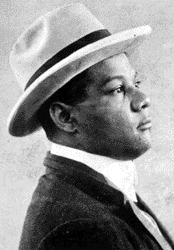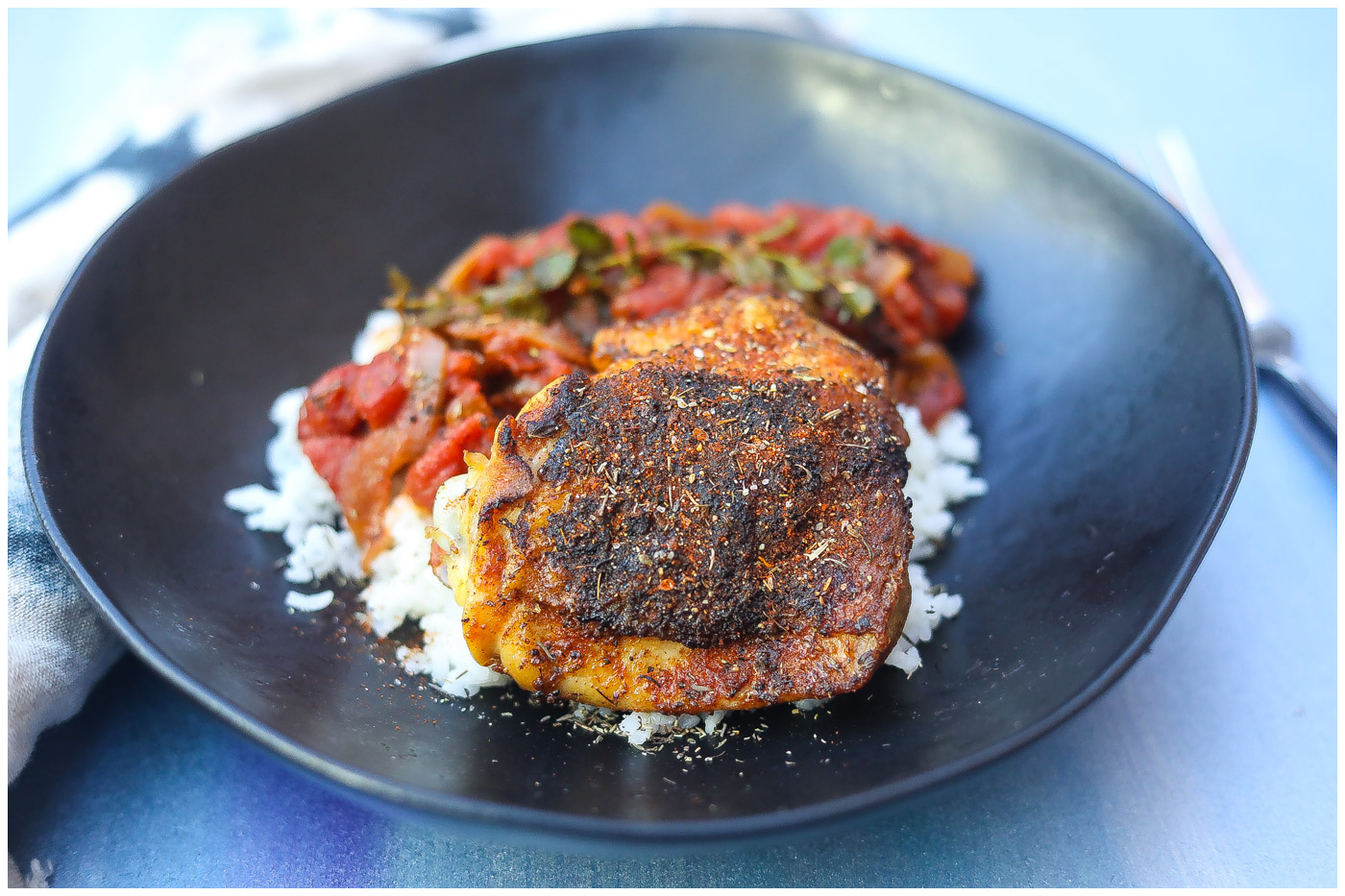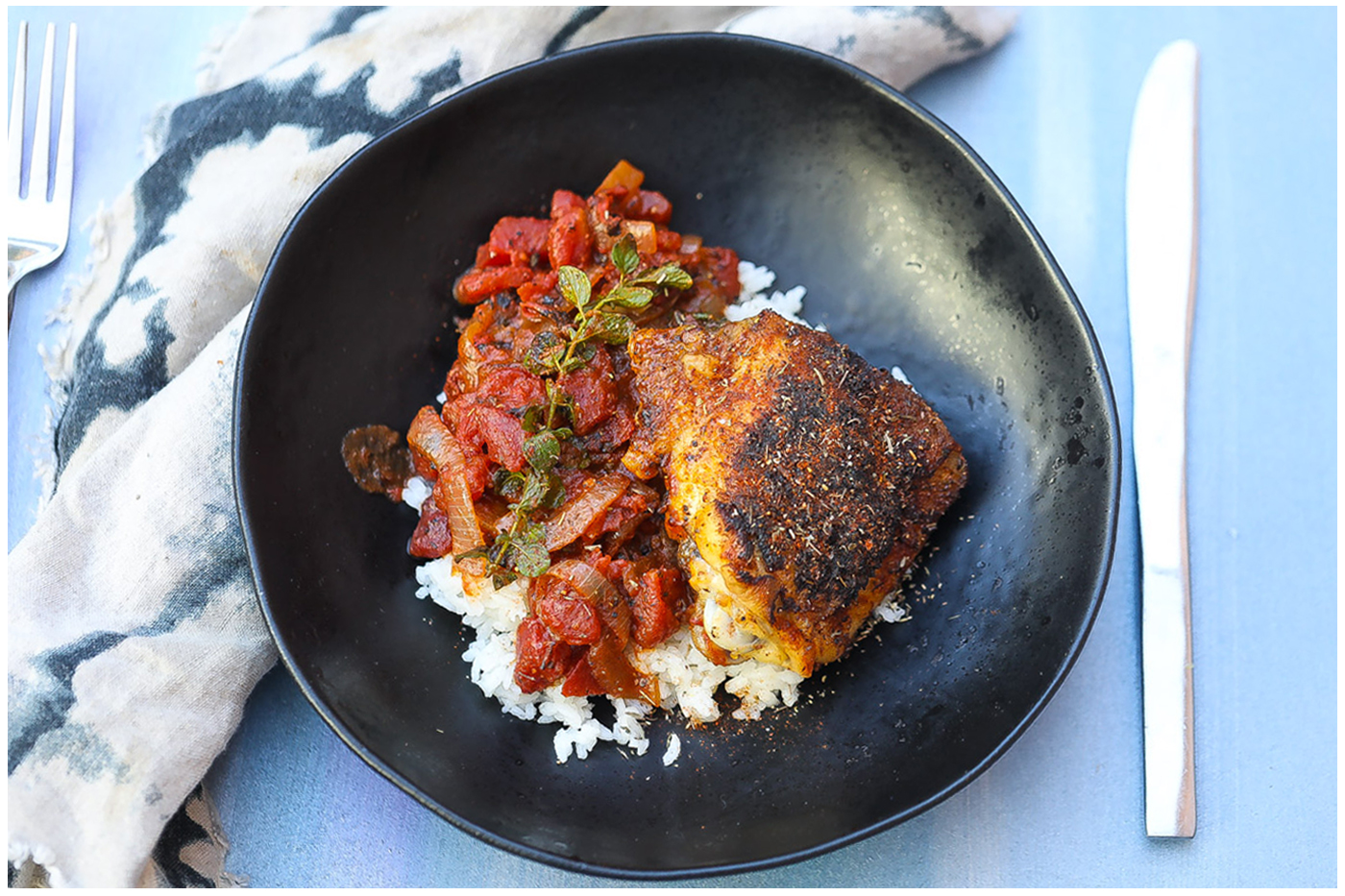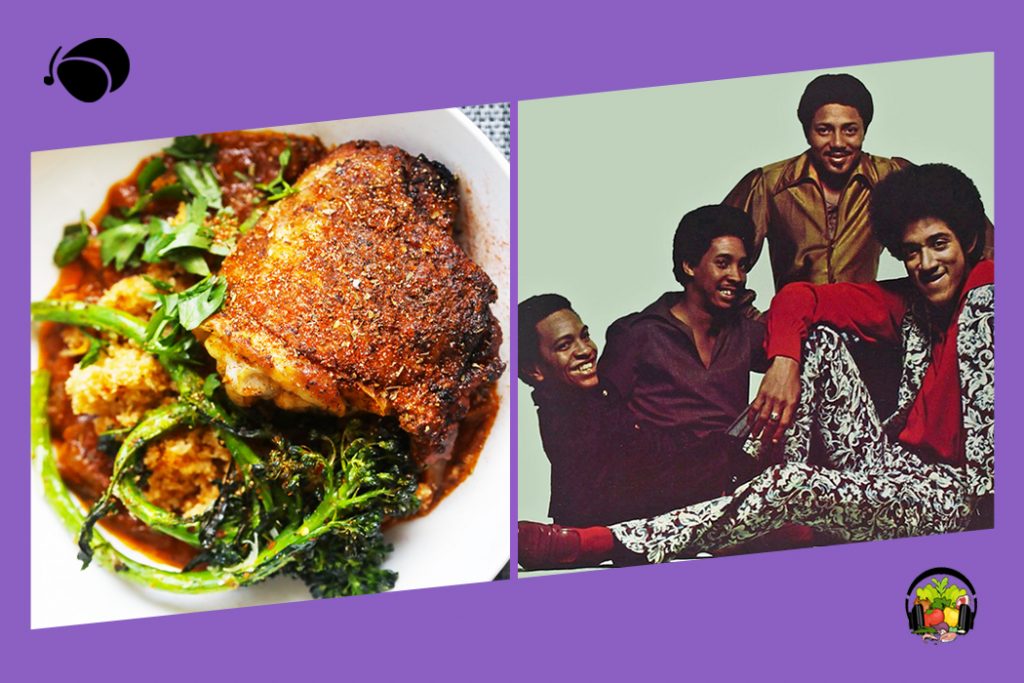
+ Welcome to our ongoing column, “Tasting Notes: Modern Soul Food and Vintage Soul Music Pairings,” by producer and educator Charles Burchell and chef and music lover Marwin Brown. We’ll teach you to cook succulent soul food recipes and classic soul music chord progressions, and break down why they go together. Brought to you by Food Fidelity.
By Charles Burchell & Marwin Brown
Music and food certainly have a lot in common. A good meal and a good song are both physically and emotionally nourishing, to the body and the mind. The craft that goes into creating, constructing, and assembling a delicious meal requires an attention to detail that parallels how a great musical artist or composer combines notes, rhythms, and timbres to create a beautiful song.
Chef Marwin Brown created his Food Fidelity blog as a platform for sharing his best recipes, as well as monthly playlists of songs that inspire them. You and I might not be thinking about the connections between music and food that often, but Brown always is.
So in this series, “Tasting Notes: Modern Soul Food and Vintage Soul Music Pairings,” we’re exploring Brown’s recipes alongside classic soul music, and talking about how their flavors align with each other. Today we’re learning about Crispy Creole Chicken.
What makes chicken “Creole” is as much an exploration of culture as it is an explanation of flavor. “Creole” is usually used as a blanket term to identify West Africans who mixed with Europeans or Native Americans during the Colonial Era, whereas Acadians or Cajuns are the descendants of French Canadians (from the modern Eastern Maritime region) who migrated to the southern Louisiana Bayou in the mid-18th century.
Creole and Cajun cultures share some similarities, but the distinct difference is the influence of African culture that is most prevalent in people who identify as Creole. During the French and Spanish colonial rule of Louisiana, the term Creole was used to identify people who were born in America but descended from people who were born abroad. Because of that distinction, Creole in the broad sense of the term, is less of an ethnic identification and more the result of categorizing a new and mixed population made up of various backgrounds.
New Orleans in particular was a unique place in the development of Creole culture because this thriving city was one of the few places in Pre-Civil War America to have a class of free people of color. Therefore many Black Creole people were able to study culinary arts, music, in addition to integrating into white society economically. This allowed Creole people to live and thrive in a three-tiered racial system that was vastly different from the racial binary of black and white that existed everywhere else in America; allowing the culture of this population to eventually melt into the city’s burgeoning culture (which would go on to produce classic American music forms such as jazz and funk).

But one of the most potent ways Creole culture is expressed is through food. Dishes like étouffée, jambalaya, gumbo, and others represent the uniqueness of Louisiana’s Creole flavor profile, and that’s because most Creole cuisine utilizes what’s referred to as the Holy Trinity of spices: onions, celery, and green bell peppers. Of course, there are many spices and blends that create a diversity and density of flavor in each dish, but these ingredients help build a familiar foundation that links the people back to the land in a meaningful way.
As a New Orleans native myself, these dishes certainly hold a special place in my heart and remind me of my friends and family every time I experience them.
For this recipe, Chef Brown and I paired another New Orleans stable, The Meters, and specifically their 1976 cover version of Neil Young’s “Down By The River” as the perfect musical accompaniment to our dish of choice.
Consisting primarily of George Porter Jr. on bass, Zigaboo Modeliste on drums, Leo Nocentelli on guitar, and Art Neville on keyboards, the band formed in 1965, and went on to back famous acts such as Lee Dorsey, Paul McCartney, Robert Palmer, Dr. John, and Allen Toussaint. All of the musicians in this band were either fully or partially Creole in heritage, and their infectious grooves are considered by many to have laid the foundation of funk music.
As the “Godfather’s of New Orleans Funk,” their downtempo, silky, syncopated grooves have inspired numerous generations of musicians and hip-hop producers alike; but here we find the group throwing some Southern spice into a recent American rock classic, showing their range and dexterity. In 1976, The Meters’ were opening for The Rolling Stones on their tour across Europe, and wanted to present audiences with a wider side to their sophisti-funky sound. Their album Trick Bag — as well as the extra session material released later on to accompany it — featured covers by the Stones, Earl King, James Taylor, Stephen Stills and even one by The Beatles.
If you’re unfamiliar with the Meters’ work, you’ve almost definitely heard them sampled on numerous hip-hop and R&B songs, like Aaliyah & Timbaland’s “Are You That Somebody?”, Amerie’s “1 Thing,” A Tribe Called Quest’s “Clap Your Hands,” and countless others.
So with these very things in mind, stick with us as we explore and unpack the song that inspired this recipe, “Down By The River” by The Meters. ~ Charles Burchell.
The Meters – “Down By The River”
One of the key aspects of Southern cooking is spices and seasoning blends; without them, well, certain dishes just wouldn’t exist. This song is a blend of Neil Young’s American folk-inspired rock, and The Meters’ slow-boiling, bluesy Southern funk.
In New Orleans funk, rhythmic syncopation is the special seasoning blend that gives the music its unique flavor. If most musical styles that preceded funk, such as R&B, attempted to use the full range of musical tools available to tell a story, funk music fully embraced the concept of “less is more.”
In the case of The Meters, this is defined by simple and repetitive grooves with uncomplicated chords and changes. Similarly, if you throw a bunch of spices at a chicken, it doesn’t make it Creole — you have to get the combination of herbs and cooking methods right, and let the flavors do the talking.
“Down By The River” has two distinct harmonic sections that are propelled by the bass line, and chorus vocals that enter in the second harmonic section. The first section is a two-chord vamp between E minor 9 and A dominant 7. The majority of the song rests solely on this vamp, which is driven by the rhythmic conversation between the bass and drums.

It’s a pretty simple tune that hits hard and grooves slow. And by the way, if you’re longing to learn just a bit more about how harmony and music theory works to provide underlying emotional backdrops in music, check out Soundfly’s online intro course, Unlocking the Emotional Power of Chords. You can preview a lesson for free, and subscribe here to access every course on Soundfly.
The second harmonic section sees a departure from this vamp into another two-chord vamp with slightly different harmony: C major to B minor. The entire song oscillates mostly between these two sections and are all centered around the funky bass line which makes use of the E minor pentatonic scale. After the second guitar solo, there’s a bridge section that goes: G major, D major, A dominant 7.
The key ingredient to what makes this song so funky is the spice blend of drum hits and anticipated beats. Both the main bass line and drum figure have a hit on the second sixteenth note of the fourth beat of every two-bar phrase. This little syncopation, much like the combination of dried spices in Marwin’s creole Chicken recipe, is what gives the song it’s spice and flavor.
Check out just the first two bars of the tune:

The relaxed tempo of this song, which is somewhere around only 70 BPM, also correlates to the relaxed pace of life in general in the Deep South. I’m not surprised that the below recipe calls for wine, as the Greek God of wine and fertility Dionysus is basically the Patron Saint of New Orleans. Do yourself a favor: throw this tune on, kick back, and check out Chef Brown’s Creole Chicken recipe listed below.
With food and music both, it’s important to use good ingredients, but it’s more important to know what to do with them. Brown’s recipe for Crispy Creole Chicken is below, and you can try it yourself. If you’d like to check out his other soul food recipes, head to Food Fidelity.
Crispy Creole Chicken

Ingredients
- 1 lb chicken pieces (thighs and drumsticks)
- 1 medium yellow onion, sliced thinly
- 2 garlic cloves, chopped finely
- 1 tsp dried thyme
- 1 tsp garlic powder
- 1 tsp dried basil
- 1 tsp dried oregano
- 1 tbsp paprika
- 1 tsp cayenne
- 1 tsp onion powder
- 1/2 tbsp kosher salt
- 1/2 tbsp black pepper
- 1 bay leaf
- 6 oz tomato paste
- 1/4 cup orange juice
- 1 small lime, juiced
- 1 cup dry white wine (Sauvignon Blanc preferable)
Instructions
Mix dry seasoning and spices together in a bowl. Season the chicken with 1/4 of spice mix. Let marinate for at least an hour.
Preheat oven to 350 degrees F. Remove chicken from the refrigerator and let reach room temperature.
Add oil or ghee butter to hot skillet and brown the chicken well over medium high heat (6-7 minutes skin side then 3-4 minutes other side). Remove chicken and set aside.
Add onions and garlic to the skillet with additional oil if needed. Sauté onions and garlic for 3-4 minutes adding 1/2 remaining spice mix to the pan about halfway through.
Add tomatoes, wine, orange juice, and lime juice mixing well.
Add chicken skin-side up back to the skillet. Place in the oven and cook uncovered 45 minutes. Chicken skin should be browned to crispiness.
Remove the chicken and reduce the sauce depending on your preferred consistency. Serve chicken with green vegetables and grains. Sprinkle the remaining spice mix on top of the chicken.
Notes: When adding chicken back to the pot with braising liquid make sure the liquid doesn’t touch the skin in order to preserve the crispiness.

Improve all aspects of your music with Soundfly.
Continue learning with hundreds more lessons on mixing, DIY home audio production, electronic music recording, beat making, and so much more, with Soundfly’s in-depth online courses, like The Art of Hip-Hop Production, Making Music in Logic Pro X and Modern Pop Vocal Production to name a few. Subscribe to get unlimited access here.




